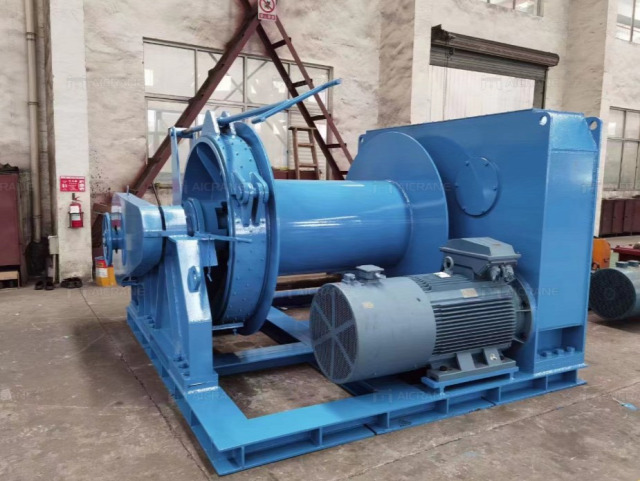Electric towing winches have revolutionized maritime operations by providing reliable and efficient solutions for towing and pulling tasks. These winches play a pivotal role in a variety of scenarios, from assisting vessels in distress to aiding in heavy-duty industrial operations. In this article, we explore the critical design considerations that shape the functionality, performance, and safety of electric towing winches, ensuring they meet the demands of modern maritime challenges.

1. Load Capacity and Ratings
Determining the appropriate load capacity of an Aicrane electric towing winch is a foundational step in the design process. Factors to consider include:
Dynamic vs. Static Loads: Electric winches must account for both dynamic loads during movement and static loads during holding. The winch's design should accommodate both scenarios.
Safety Factors and Overload Protection: Incorporating safety factors into the design prevents overloading and ensures that the winch can handle unexpected stress without failure.
2. Environmental Factors
Electric towing winches operate in harsh maritime environments, necessitating designs that can withstand exposure to saltwater, corrosive elements, and adverse weather conditions:
Corrosion Resistance: Using corrosion-resistant materials and coatings helps prolong the winch's lifespan and maintain its performance in corrosive environments.
Waterproofing and Sealing: Effective seals and waterproof enclosures protect internal components from water intrusion, preventing damage and electrical malfunctions.
3. Power Source and Efficiency
The choice of power source greatly influences the winch's efficiency and operational capabilities:
Electric Power: Electric towing winches are powered by electrical systems. Design considerations include the choice of AC or DC power, voltage levels, and power distribution.
Efficiency and Energy Consumption: Design for optimal energy efficiency to ensure longer operating periods and minimize the strain on vessel power systems.
4. Control Systems and Automation
Efficient control systems enhance the winch's usability and safety:
Manual and Remote Control: Design winches to accommodate both manual control by operators on-site and remote control options for safer operations in hazardous conditions.
Automation: Implement automation features for consistent tension control and precision in towing operations. Automation can also help prevent overloads and reduce operator fatigue.
5. Mounting and Integration
Winch placement and integration within the vessel's structure are crucial for seamless operation:
Mounting Options: Consider where the winch will be installed—on the deck, bulkhead, or other locations—based on the vessel's layout and the winch's intended use.
Compatibility with Vessel Systems: Integrate the winch with the vessel's power supply, control systems, and communication networks to ensure smooth coordination during operations.
6. Maintenance and Accessibility
Regular maintenance is essential to keep electric towing winches operating at their best:
Lubrication and Inspection: Design access points for easy inspection, maintenance, and lubrication of critical components such as bearings, gears, and cables.
Maintenance Schedule: Develop a maintenance schedule that aligns with manufacturer recommendations to prevent wear and extend the winch's lifespan.
Conclusion
The design considerations of electric towing winches encompass a range of factors critical to their performance, efficiency, and safety. From load capacity and environmental resistance to power sources and control systems, each decision shapes the winch's ability to handle demanding maritime tasks reliably. With a well-designed electric towing winch, vessels can navigate the challenges of towing, anchoring, and industrial operations with increased efficiency and a higher level of safety on the open seas.

